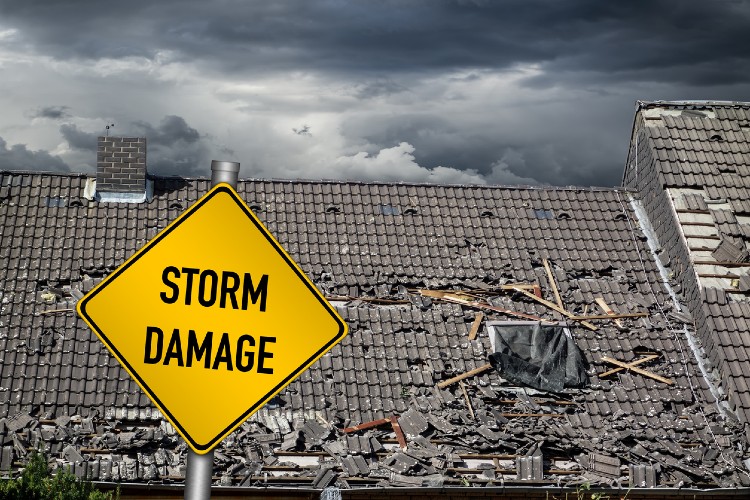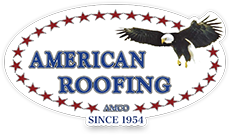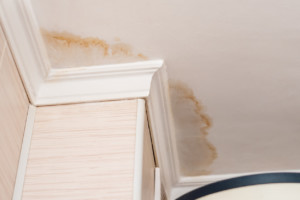
Whether roof storm damage is caused by rain, hail, or wind, navigating what to do next can feel complicated and overwhelming. How do you separate the facts from fiction when it comes to roof repair?
Well, we’re here to help. American Roofing has heard and seen it all when it comes to everything roof-related. Over the years, we’ve repaired countless homes and buildings throughout Utah and are familiar with the damage caused by heavy winds, rain, and snow. In fact, we’re so experienced that we’ve been entrusted to do the roof replacement for many beloved Salt Lake City buildings, including the Assembly Hall on Temple Square and the Bennett Federal Building.
You can trust us to tell you the truth about storm damage to your roof and repair needs, including what you can expect from filing a storm damage roof insurance claim.
Below are some common myths surrounding storm damage roof and repair—and the truth about each one. Read through them and then learn the steps to take if you do need to repair a storm-damaged roof.
Popular Myths About Storm Damage
Myth #1: You Should Get On Your Roof to Inspect It After a Storm
No, you should not get on your roof to inspect it after a storm. This is dangerous and should be left to a professional who knows how to do it safely and effectively. They will be able to inspect all areas of your roof, including the hard-to-see areas like the shingle granules, step and chimney flashing, sealant, and any areas that may be showing signs of mold or rot.
What you can do is visually assess your roof from the ground, look at your roof through your windows, or ask a neighbor to take a look from their windows. Take notes and lots of pictures (for insurance purposes) of dented, ripped, wavy, or missing shingles. Also, do a visual inspection inside your attic and on the ceilings, looking for active leaks or dried water spots.
Then, call a professional to assess for roof damage after a storm.
Myth #2: Detached Shingles Aren’t That Big of a Deal
Wrong—even one detached shingle is a big deal because it can lead to a lot of expensive damage as soon as the next rainstorm strikes. Without a shingle properly in place to repel rain, the water inevitably finds its way underneath other shingles and, eventually, a roof leak will occur.
Since the cost of replacing a few shingles is quite affordable, there’s no reason to delay this very important, time-sensitive roof repair.
Myth #3: If I Can’t See Water In My Ceiling, My Roof Doesn’t Have Any Leaks
While dripping water, bulging sheetrock, and noticeable water stains are sure signs of storm damage to your roof, they aren’t the only ones. Other signs of a roof leak include loose or broken vent hoods, mold where the roof meets your home’s exterior walls, loose or rusty step and/or chimney flashing, debris piles in the valleys of your roof, or shingle granules in your gutters.
In Utah, the harsh weather conditions can accelerate these issues, making it essential to monitor your roof closely. When trying to determine if you have a roof leak, start with a visual inspection of your roof (from the ground) and inside your attic. Then call a professional to do tests and find exactly where the leak is originating (it can be located far away from where the water is actually dripping).
Myth #4: My Neighbor’s Insurance Has to Pay If Their Tree Falls Onto My Roof
No, if a neighbor’s tree falls onto your roof, their insurance is not responsible to pay for the repair of your storm-damaged roof. That’s because insurance covers your own property, so your own insurance will have to cover the expenses.
The exception is if the fallen tree was caused by negligence—for example, if it had been dead for a long time and should’ve been felled already. This can be very difficult to prove, however.
Myth #5: I Shouldn’t File an Insurance Claim If I Want to Maintain My Current Premium
Insurance companies are not allowed to cancel your policy after filing a legitimate claim, and filing one claim will not necessarily raise your premium rate. However, it is possible for your premium to increase at any time (even if you don’t file a claim).
Filing a storm damage roof insurance claim after a big storm event can end up saving you a lot of money in the end. This is exactly why you pay for insurance in the first place, so take advantage of its benefits.
However, it’s important to check your policy, because some wind/hail deductibles are very high (sometimes based on a percentage of your home’s value).
The Steps to Take If You Need to Repair a Storm-Damaged Roof
If you suspect you have storm damage and need repair, follow these four steps:
- Call your homeowners insurance provider to discuss the specifics of your policy (what’s covered, deductible, etc.).
- Schedule a professional roof inspection.
- Get a free estimate on roof repair costs.
- Discuss warranty packages and financing options.
If you live in Utah and have signs of storm damage to your roof, choose American Roofing to help with all your home, condo, and other roofing needs!

